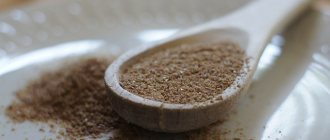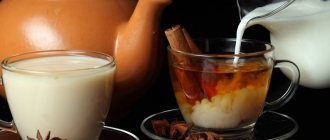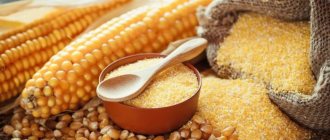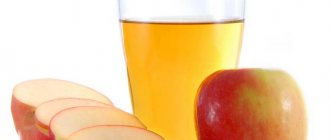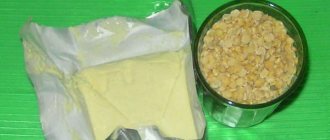What is bulgur?
Bulgur is a grain made from wheat harvested during milk maturity. The wheat is steamed, dried in the sun, cleared of bran (remnants of the shell) and crushed into small fractions. Externally, the resulting grits resemble corn; in Russia, barley grits can be called an analogue of bulgur, only, unlike the oriental product, it is not steamed, therefore, the taste is not so rich. It is thanks to steaming and drying that bulgur gets an unusual taste and aroma, reminiscent of a nut. Modern bulgur can have different degrees of grinding: fine grinding is used for baking bread, medium grinding is used for porridges and soups, coarse grinding is good for pilaf.
Bulgur is easy to prepare - you just need to fry it in a hot frying pan with the addition of butter or vegetable oil, then add water (the proportions depend on the desired consistency of the dish) and cook until tender. This grain does not need to be washed before or after cooking.
Bulgur is an excellent analogue to the usual rice, but unlike it, it does not boil and does not stick together.
The cereal can be used both as a side dish for meat dishes or as a component of pilaf, and as an independent dish - bulgur cutlets are nutritious and satisfying. This grain is added to soups and stews, stuffed with vegetables, and, of course, added to salads, the most famous and “ancient” of which is Tabbouleh salad. You can also use this product in preparing sweet dishes - it goes well with nuts and honey; it is not recommended to add dried fruits, as this can cause serious fermentation processes in the stomach. The sweets turn out incredibly tasty and healthy, although quite high in calories.
Calorie content of boiled bulgur
When many people hear the word “wheat,” they associate them with baked goods, which contain many “empty” calories that tend to turn into fat deposits.
Indeed, bulgur is quite high in calories - 100 grams of boiled cereal contains about 350 Kcal, and if we take into account that it is fried in oil before cooking, this figure may increase slightly.
But, unlike products made from refined wheat - bread made from premium flour, pasta made from refined flour, bulgur contains mostly complex carbohydrates, which take longer to digest, do not cause sudden spikes in blood sugar levels, and are not processed into fats. True, if you abuse this product and eat it in large portions several times a day, “baggage” in the form of extra pounds may appear. True, this applies not only to bulgur, but rather to absolutely all products, because overeating has never benefited anyone.
Is it possible to eat bulgur while losing weight?
When losing weight, bulgur is not only something you can eat, but you need to eat it. Even a small portion of the product can satiate a person for quite a long time. The feeling of fullness will not encourage a person to snack. This will have a positive effect on his figure.
To achieve good results in terms of weight loss, you need to remove fats, sugar, confectionery and bakery products from your diet. It is also necessary to exercise. All this will help you lose 2 kilograms of weight in a week. In a month, with the help of bulgur and sports, you can lose up to 10 kilograms. To prevent the weight from returning again, you must continue to adhere to proper nutrition and devote time to physical exercise.
Bulgur for weight loss will be useful only if alcoholic beverages and salty foods are excluded from the diet. Preference should be given to vegetables, fruits and lean meats. You should eat fractionally, up to 5 times a day, and only in small portions. Dinner should be 3 hours before bedtime. You also need to remember about water. The daily norm is 2 liters.
The benefits and harms of bulgur
This product, so beloved in the East, however, like any other, in addition to its beneficial properties, also has some undesirable consequences of consumption. For the most part, this depends on the quantity in which the cereal is consumed, although there are other conditions. Let's start with the good news.
Benefits of bulgur
The value of bulgur lies in the fact that this grain contains almost the entire spectrum of vitamins and microelements vital for humans. These are primarily B vitamins (B1, B2, B3, B4, B5, B6, B9), vitamin K, E, PP, choline, beta-carotene. Microelements: iron, potassium, calcium, sodium, phosphorus, copper, selenium, zinc, manganese.
This cereal also contains ash substances, saturated fatty acids, saccharides and fiber. It’s worth talking about the latter in more detail, because this component brings invaluable benefits to the human body. In the east they say that a person’s health depends on the condition of his intestines, and it is thanks to fiber that the intestines are cleansed and get rid of toxins and various deposits that poison the entire body system. Fiber is something like a “broom” for the intestines, without which the proper functioning of this important organ is almost impossible.
B vitamins have a beneficial effect on the functioning of the nervous system, and they will be absorbed much easier than synthetic vitamin complexes from the pharmacy. A person who receives vitamins from this group is more resistant to stress, easily copes with life's troubles, and tolerates nervous tension easier than others. Mineral salts help restore metabolism, give vitality to skin and hair, and strengthen bones.
The nutritional properties of bulgur are indispensable for people in difficult professions, which are often accompanied by physical and mental stress. It will be useful to include this cereal in the diet of athletes. Bulgur is perfectly digestible, providing the body with energy for 5 hours in advance, is well absorbed, and gives the body all its beneficial substances.
Harm of bulgur
In principle, bulgur cannot harm a healthy person who does not adhere to any strict diet. The situation is different for those who are forced to eat a certain way.
First of all, people who want to lose weight need to eat this cereal very carefully. The fact is that bulgur is the record holder for the highest calorie content among grains common to Russian people. In addition to this, the recommended cooking method is frying first, which provides additional calories. On the other hand, nutritionists advise including this cereal in their diet even for people who are prone to obesity, the only condition is in small quantities.
Fiber, which is so beneficial for the intestines, can also have a negative effect on the body of an unhealthy person. Its use is not recommended for people suffering from diseases of the gastrointestinal tract, especially during their exacerbation. Therefore, for those who have ulcers, gastritis, or increased stomach acidity, it is better to refrain from consuming this cereal until recovery.
The benefits of cereals
Bulgur helps improve the condition of the upper layers of the skin, accelerate hair growth, and fight dandruff. The product also strengthens bone tissue and the cardiovascular system, and restores metabolism. 100 grams of prepared product contains, as a percentage of the daily value*:
- manganese - 31;
- magnesium - 8;
- copper - 8;
- potassium - 3;
- zinc - 5;
- iron - 5;
- vitamins: PP - 9;
- B5 - 7;
- B6 - 4;
- B1 - 4;
- B9 - 5;
- B2 - 2.
The rich composition of elements and high content of complex carbohydrates determines the wide popularity of cereals among nutritionists.
Contraindications to the use of bulgur
- As mentioned above, healthy people can eat bulgur without fear of harming the body. But those who have gastrointestinal diseases need to be extremely careful.
- There is one more serious contraindication, which applies to those people whose body is not able to digest gluten. Bulgur contains a lot of this substance, and for those who suffer from celiac disease (the inability of the digestive system to absorb the protein of certain grains), this cereal can be deadly. The whole danger of the situation is that some people do not even suspect that they have this disease. But if, after eating bulgur, weakness, drowsiness, flatulence, or diarrhea appear, this is a reason to consult a doctor and check the fact of normal absorption of gluten.
- Some people may be allergic to cereals; bulgur is also not suitable for them.
Diet menu with bulgur
Bulgur is a dietary product; it underlies several nutritional principles. Below we give an example of a weekly diet menu that includes bulgur.
Diet for a week
The morning diet includes 100 grams of porridge, yogurt and an apple. Daytime - 100 grams of ready-made cereal, vegetable salad, green tea, and evening - stewed vegetables with kefir or fermented baked milk. Use a handful of nuts or berries as a snack. This is a menu option without meat and fish, but if desired, they can be consumed boiled in the evening.
Monthly diet plan
Sample menu for weight loss:
- In the morning - cottage cheese with dried fruits or an omelet, tea or coffee without additives.
- For lunch - vegetable soup or porridge, compote and bread.
- For dinner - poultry or fish stew, vegetable salad, fermented milk drink.
- Nuts and fruits are used as a snack.
Proper nutrition helps you lose weight. This option lasts 4 full weeks. Exclude baked goods, sugar and any sweet foods, with the exception of fruits, from the diet. Limit the amount of salt in food. Healthy bulgur is eaten only for lunch or dinner.
*Data source: USDA SR-23
USDA National Nutrient Database for Standard Reference
How is bulgur used in cosmetology?
This product is also used in cosmetology. It is an ingredient in masks and scrubs. Masks have a rejuvenating effect and get rid of the first wrinkles. Scrubs are used to combat cellulite. For facial skin, bulgur is used only in boiled form.
Scrub for cellulite
Mix 100 g of fine or medium-ground cereal with 50 ml of olive oil. Apply to thighs. Hold for 5 minutes. Massage for 10 minutes and rinse with running water. Do this scrub every other day in a course (10-15 times).
Fact! It is better to do the scrub after a sauna or hot bath so that the skin is steamed.
Mask
Boil bulgur in milk (100-150 ml), cool. Add 1 yolk, 1 tsp honey. Mix the ingredients until smooth, apply to face and décolleté for 20 minutes, rinse with running water. You can use the mask daily for 12 days. Afterwards a break is taken for a month, then the course is repeated. The same mask can be applied to your hands.
Rules for losing weight using cereals
Bulgur for weight loss, reviews of which offer interesting recipes, can be used to prepare many dietary dishes. It has a delicate, slightly nutty taste, so it can be enjoyed on its own. However, it is not at all necessary to do this every day.
Cereals can be added to salads, soups and main courses. There is only one basic rule - most of the other ingredients must also correspond to dietary nutrition.
Bulgur comes in medium to large sizes and takes 3-20 minutes to cook, depending on the type. The larger the grain, the longer it takes to cook. The process of cooking bulgur is similar to cooking rice or couscous. You just need to place the cereal in boiling water in a ratio of 1 to 2 and cook until soft.
Mediterranean in origin, bulgur remains a staple in Middle Eastern cuisine. It is often used in salads along with herbs, vegetables, spices and sometimes other grains.
Bulgur can be used as a base for breakfast porridges or for seasoning soups and stews. For weight loss, it is recommended to use it in almost any recipe that calls for rice, couscous or similar grains as a dietary replacement.
Useful tips and tricks
- It is not advisable to wash or rinse bulgur before cooking.
- While cooking bulgur, do not lift the lid - this grain does not need stirring.
- Bulgur can be soaked for consumption rather than boiled. To do this you will need 2 times more liquid than cereal. To soak bulgur, you need to pour hot water over it, stir and leave to stand covered for 30 minutes. or place in the refrigerator overnight.
- Bulgur continues to swell after cooking if there is moisture. Sometimes the volume more than doubles, so be sure to use a large enough pan.
- Bulgur grains can be used in meatloaves, soups, stews, casseroles, and sauces for Mexican or Italian dishes. Additionally, cooked and ground bulgur is used in waffles, pancakes, muffins, salads or baked goods of all kinds to add a nutty flavor without the fat. Therefore, you can safely experiment with it and try it both as an ingredient in the main dish and as a side dish.
When constantly using bulgur for weight loss, it is recommended to boil large batches of cereal and freeze it in portions for preparing various dishes. According to reviews, the most popular dietary dishes made from this grain are various casseroles and salads.
Composition and calorie content
The product contains numerous vitamins, nutrients and minerals.
Vitamins
| Vitamin name | Quantity per 100 g |
| Choline (B4) | 28.3 mg |
| Folic acid (B9) | 26 mcg |
| Tocopherol (E) | 0.068 mg |
| Vitamin A | 5 mcg |
| Thiamine (B1) | 0.238 mcg |
| Nicotinic acid (PP) | 5.111 mg |
| Vitamin K | 1.8 mcg |
| Pyridoxine (B6) | 0.342 mg |
| Riboflavin (B2) | 0.115 mg |
Minerals
| Name | Quantity per 100 g |
| Manganese | 3.049 mg |
| Copper | 0.335 mg |
| Iron | 2.47 mg |
| Potassium | 410 mg |
| Calcium | 35 mg |
| Magnesium | 165 mg |
| Sodium | 18 mg |
| Zinc | 1.948 mg |
| Selenium | 0.002 mg |
Nutrients
| Name | Quantity per 100 g |
| Cellulose | 18.5 g |
| Ash | 1.53 g |
| Water | 8 g |
| Monosaccharides | 0.45 g |
| Saturated fatty acids | 0.233 g |
The chemical composition of the cereal is rich in vitamins: thiamine, B6, folic acid. When cooking bulgur, these nutrients are retained in full, unlike buckwheat and rice. The fiber in the finished product exceeds the content in white rice (12.1 g) by 1.5 times.
The nutritional value
The calorie content of dry cereal is 342 kcal (1430 kJ).
Composition of main nutrients:
- Proteins 12.5 g;
- Fats 1.8 g;
- saturated 0.23 g;
- monounsaturated 0.17 g;
- polyunsaturated 0.54 g;
- Carbohydrates 68.95 g;
- sugar 0.41 g;
- dietary fiber 12.5 gr.
Dry bulgur has a lower amount of carbohydrates than buckwheat and white rice, but the amount of protein prevails compared to other cereals.
Distribution history
Bulgur is distributed all over the world and it is difficult to determine where it was first produced. But historically the product is popular in national cuisines:
- Syria;
- Israel;
- India;
- Turkey;
- Palestine;
- Jordan.
In the regions of Northern and Central India, southwestern Asia, bulgur until the 4th century BC. e. was the most common food of the poor, later it was replaced by rice, as stated in the Arabic proverb “Rice regrets that bulgur hanged itself.”
In India, bulgur is called "Dalia", as is the porridge prepared using it.

